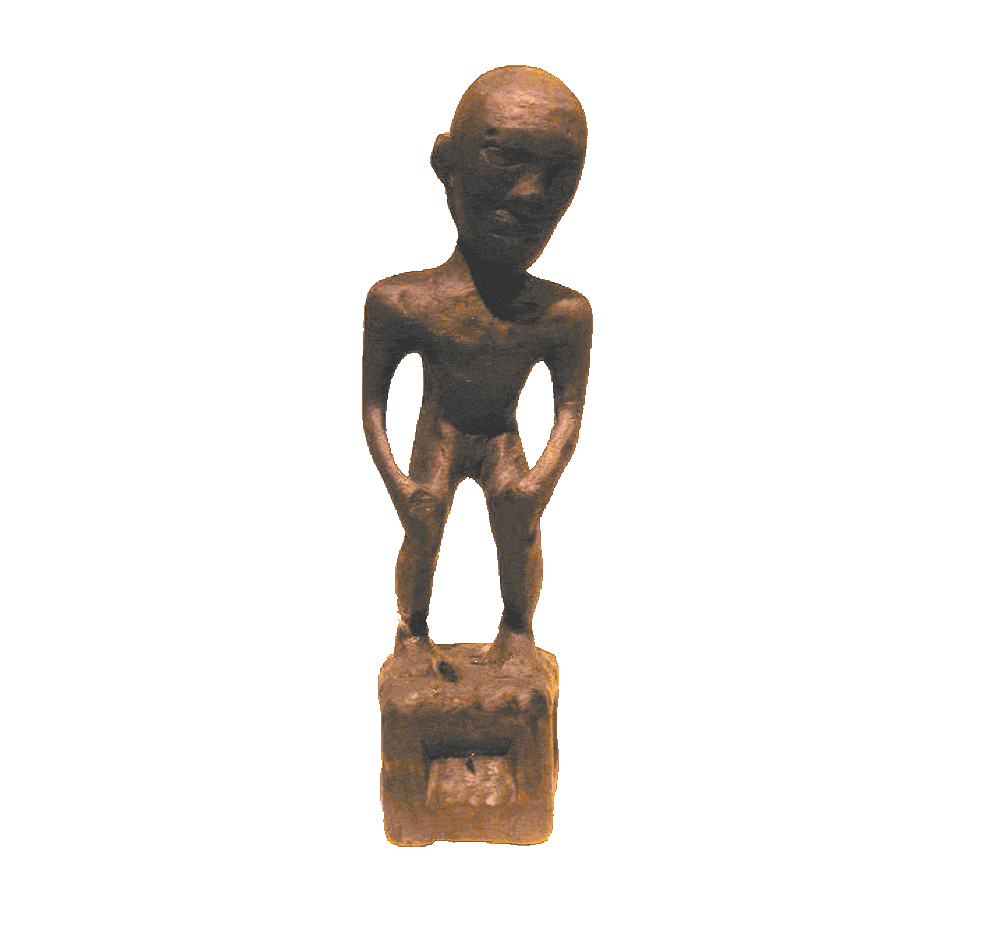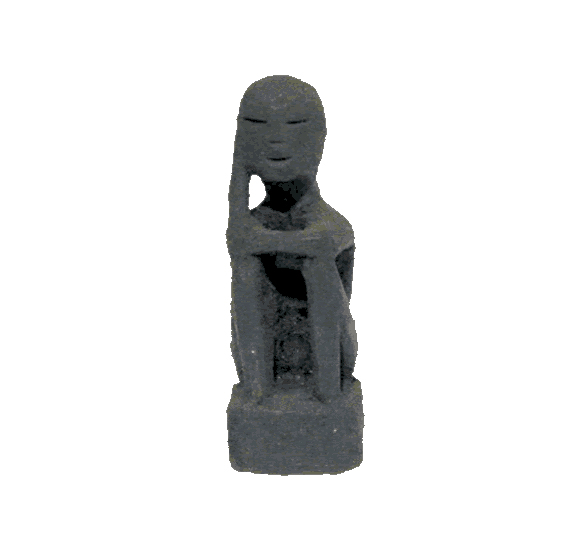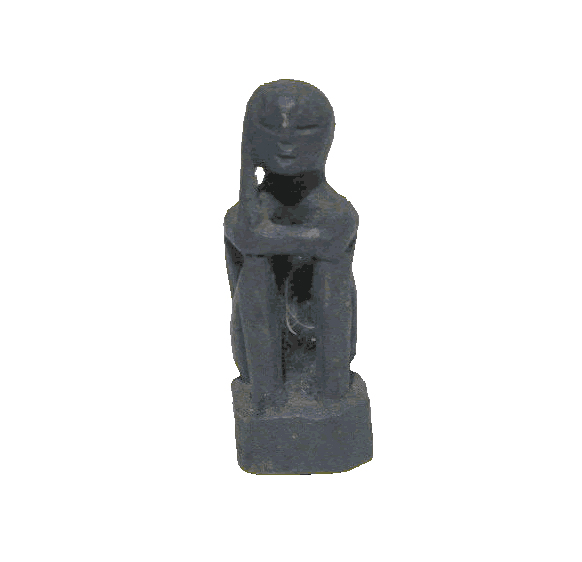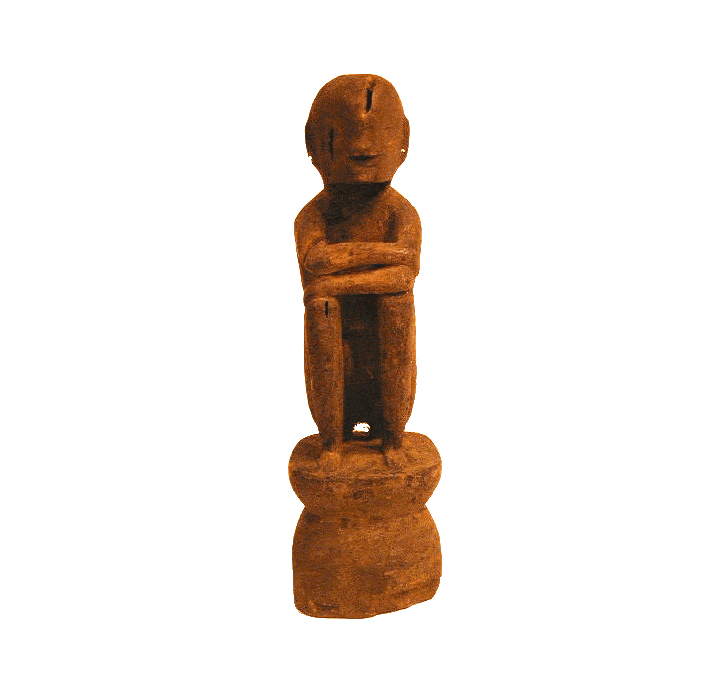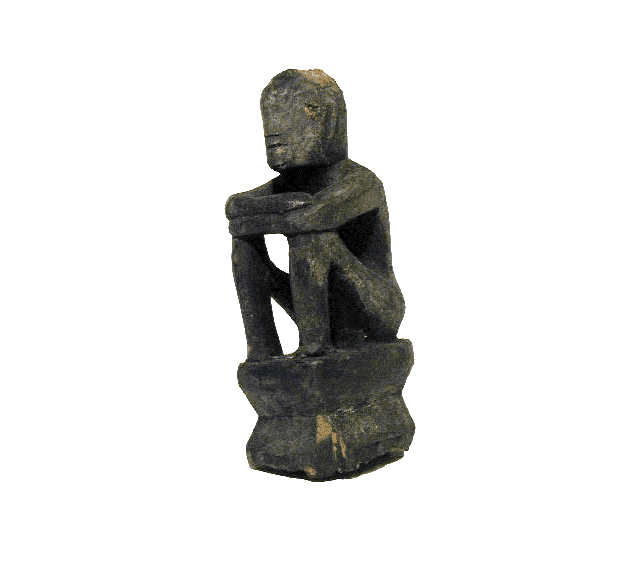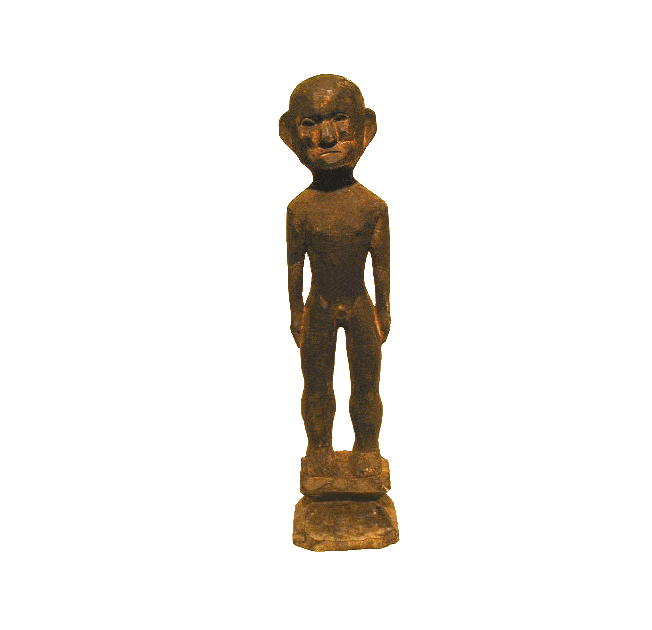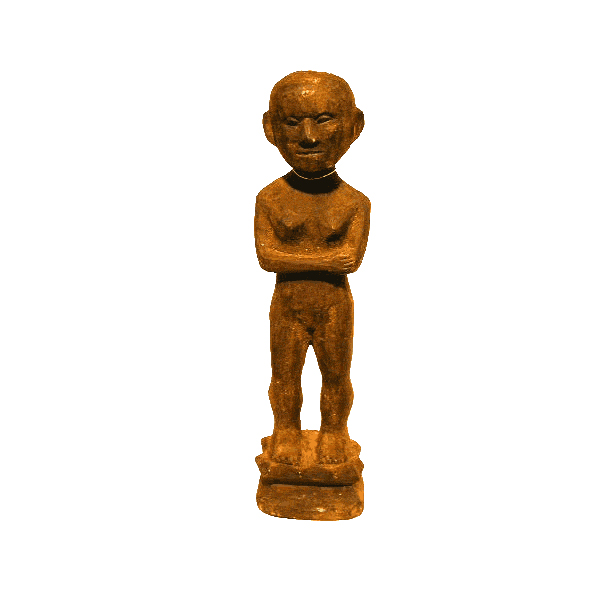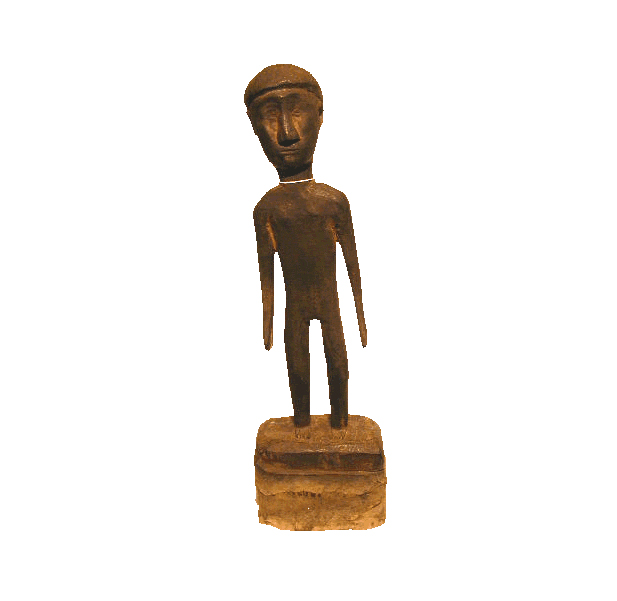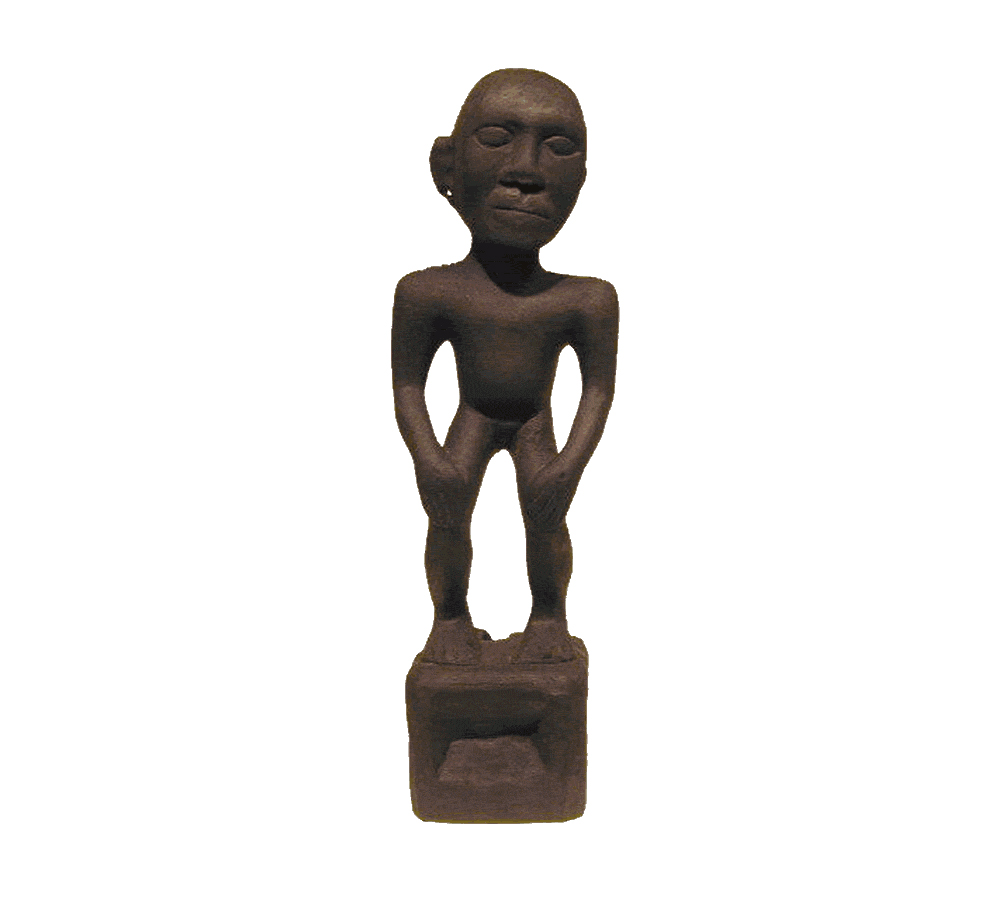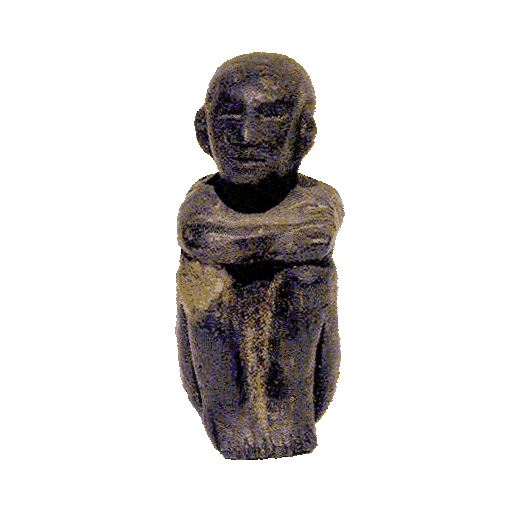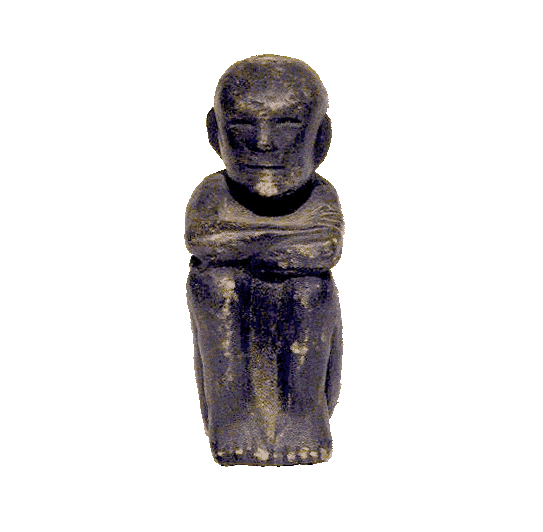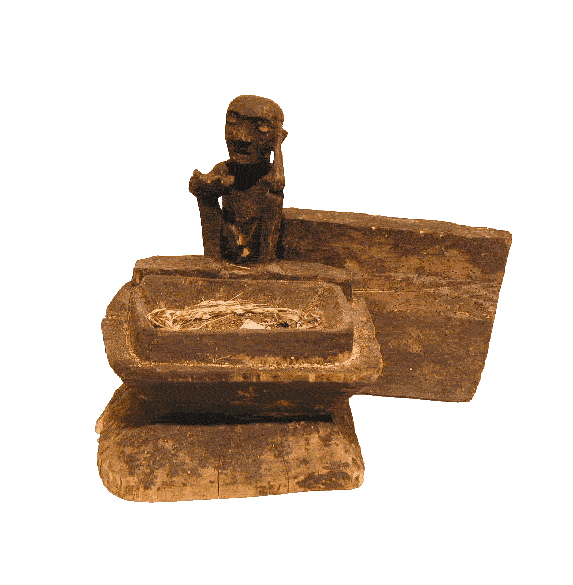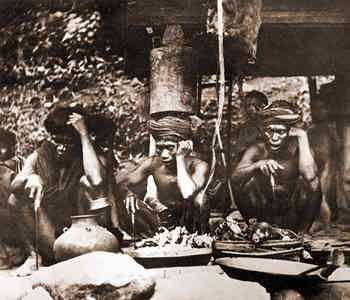Bulols
The bulol, or "Ifugao rice god," is a carved human figurine into which a certain class of anito is said to incorporate itself when worshipped. Bulols are kept in the house or granary, and are usually made in pairs. They are carved of narra wood, which represents wealth, happiness, and well-being. Every step in their production requires a ceremony, from tree selection to arrival at the owner's house; a consecrated bulol has been bathed in pig's blood, had myths recited to it, and received offerings of wine, ritual boxes, and rice cakes.
Art through the Ages...
"On the side of plastic and depictive art, the Filipino cannot be accorded the right to high rank. . . . The anito figures . . . [are] rude: a suggestion of the human figure in abbreviated conventionalized form without aesthetic aspiration sufficed all needs."
–Alfred L. Kroeber, 1920
" [T]he bulol spirit images are fine examples of abstract art, for the Ifugao woodcarver expresses his feelings rather than attempts realistic representation. The distortion, as many observers want to call it, results from emphasis being placed on the quality of 'other worldliness' or the 'preternatural'."
–Alfredo Evangelista, National Museum of the Philippines, 1970s
"Comparing an Ifugao wooden carabao with one carved in the lowlands, the latter is a perfect replica of a real carabao, but it is cold, dry, and expressionless. The Ifugao carabao is alive. Anatomically, landmarks are exaggerated in order to emphasize certain characteristics of the carabao and this gives life and action, which is not the case with the lowland product. The feet of the animal are increased in size and it gives added concept of weight. His eyes are supposedly placed higher on his head to give emphasis to the upward glance that is common to the carabao."
–Gilbert S. Perez, 1955
